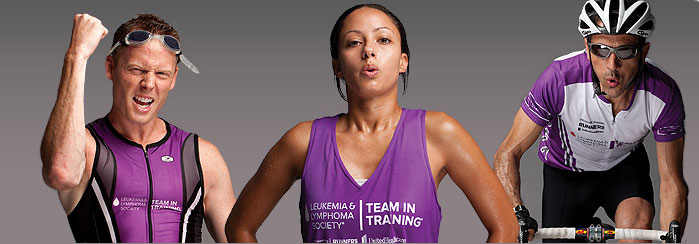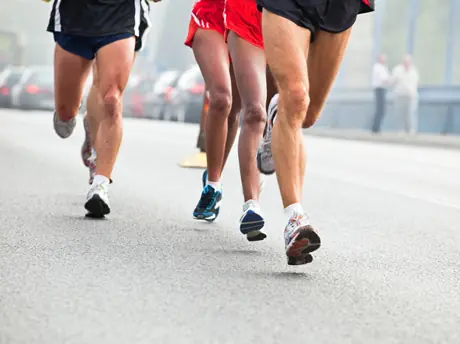Most endurance athletes (serious and casual alike) know the important role hydration
plays in health and athletic performance. But what you don’t know can hurt you –
drinking too little or too much during intense exercise can be dangerous.
Dehydration: Too Little of a Good Thing
Keeping the body properly hydrated with the right fluids is essential to safety and performance in an endurance event. The fiercest competitor an endurance athlete faces is dehydration.
The first obvious sign of dehydration is thirst, but things can quickly get worse. Dehydration not
only hampers performance but also increases the risk of heat illnesses, such as heat exhaustion or potentially deadly heat stroke. The good news is that dehydration and heat illness can be prevented and performance improved simply by following the right fluid-replacement plan.
Signs of dehydration and heat illness can include:
• Headache • Fatigue • Dizziness • Nausea • Muscle cramps • Weakness
• Irritability • Vomiting • Heat flush • Abnormal chills
Hyponatremia: Too Much of a Good Thing
While it’s important to drink enough to remain hydrated, overhydrating by drinking too much can
lead to a condition called hyponatremia, which is serious and sometimes deadly.
What is Hyponatremia?
Hyponatremia is a condition that occurs when the level of sodium in the blood drops below
135 mEq/L (138-142 is normal).* Symptoms of hyponatremia usually begin at blood sodium values below 130, with values less than 120 resulting in a serious medical emergency. Exercise-related hyponatremia is thought to be caused by overdrinking. Although rare, hyponatremia can result in seizure, coma, and death, so it is vital that athletes learn about the condition and how to prevent it.
Who’s at Risk for Hyponatremia?
Anyone who drinks too much and does not adequately replace the sodium that is lost in sweat
risks hyponatremia, but certain people should be especially careful:
• Endurance athletes – those exercising more than four hours
• Athletes on low sodium diets
• Beginning marathoners who tend to be slower and are hyper-vigilant about hydration
• Athletes who overhydrate before, during, and after exercise
• Salty sweaters – those athletes whose skin and clothes are caked with white residue after
exercise
Symptoms of Hyponatremia
Watch for a combination of these symptoms, especially if you or somebody you know is at a
high risk for the condition.
Signs of hyponatremia can include:
• Rapid weight gain • Swollen hands and feet • Confusion • Dizziness • Nausea
• Throbbing headache • Apathy • Severe Fatigue • Cramping • Bloated stomach
• Wheezy breathing • Seizure
Seek emergency care for hyponatremia victims. In most cases, they will be treated with:
• An intravenous solution of a concentrated sodium solution,
• A diuretic medication to speed water loss, and
• An anti-convulsive medication in the case of seizure
The Winning Hydration Plan
The best way to prevent both dehydration and hyponatremia is to learn the right way to hydrate.
Use the following tips to create your own hydration game plan:
• Drink to Stay Hydrated, Don’t Overdrink —
Your fluid-replacement plan should be designed to minimize loss of body weight so that you avoid dehydration during exercise but prevent weight gain from excess hydration during training or races. A good way to gauge your hourly sweat rate is to figure out the difference in body
weight plus your drink volume. For example, if you lost 11/2 pounds (24 oz) during the training, and drank 12 ounces, you should try to drink 36 oz (24 + 12) each hour during similar-intensity
training and racing. In this example, drinking 9 ounces every 15 minutes would do it.
Overdrinking dramatically increases the risk of hyponatremia. It is vital not to overdrink before a
race, because doing so can lower blood sodium even before the race begins. Also, don’t overdrink during or after the race!
• Maintain a Salty Diet
To make certain you replace all of the salt lost during training. During a long race (e.g. more than four hours), consider eating salty snacks such as pretzels, especially if you are a salty sweater.
• Favor Sports Drinks
During long distance or intense training and competition drink sports drinks to help keep your
Body hydrated, fueled and salted. The flavor of a sports drink will encourage you to drink
enough to stay hydrated, the carbohydrate energy will fuel your active muscles, and the
electrolytes will help replace some of what is lost in sweat. But remember don’t overdrink any
fluid!
• Recognize Warning Signs of both heat illness and hyponatremia and learn to distinguish
between the two. When in doubt, stop exercise, stop drinking and seek medical help fast.



